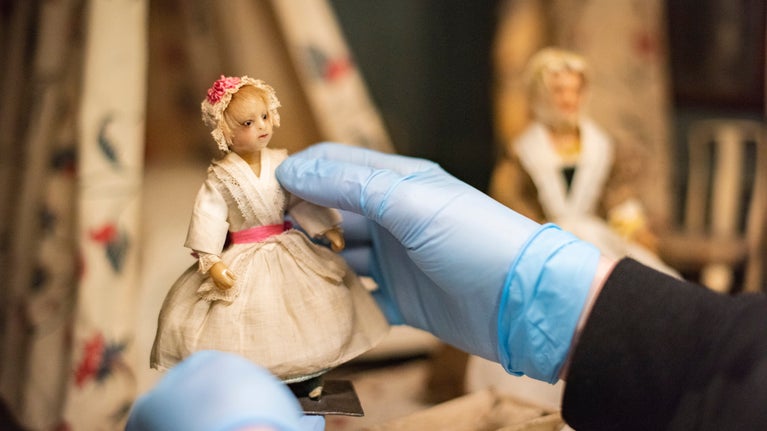
Protect buildings and collections in our care
We look after over 300 historic buildings and nearly one million works of art, which need constant care to maintain them. You can help protect these important buildings and collections by donating today.
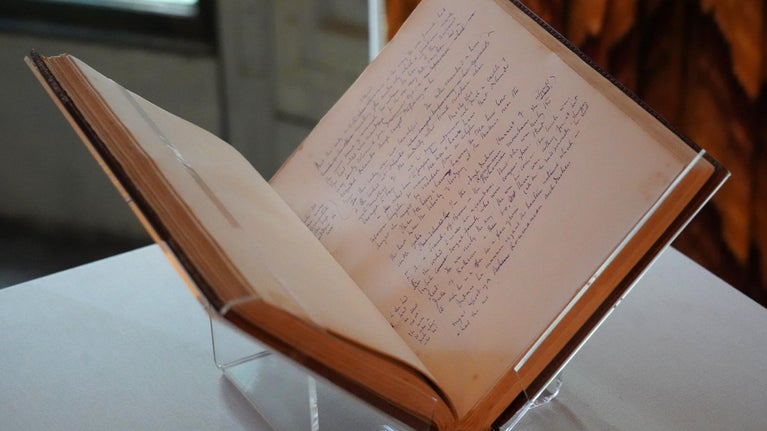
Virginia Woolf's 'Orlando' was inspired by Vita Sackville-West and Knole. A project to digitise the original manuscript means it is now accessible online.
Virginia Woolf’s novel ‘Orlando: A Biography’ has been described as ‘the longest and most charming love letter in literature’. The book follows the story of a fictional aristocratic poet who tumbles through historical time periods and whose sex changes throughout the story. Woolf’s inspiration for her main character was her friend and lover, Vita Sackville-West.
Virginia first met Vita, a fellow writer, at a dinner party in 1922. In the years that followed the women developed a romantic relationship which had a profound impact on both their lives and their writing. The character of Orlando was inspired by Vita’s life, friends, ancestors and childhood home at Knole. Vita was born in 1892 to Lord and Lady Sackville but, as her parents’ only daughter, was doomed to never inherit her family home. The loss of Knole left a deep scar on Vita’s life.

My voluntary exile from Knole is very curious... I feel exactly as though I had a liaison with a beautiful woman who never, from force of circumstance, belonged to me wholly.
In ‘Orlando: A Biography’, the main character is always in possession of their ancestral home and this certainty was Virginia’s gift to Vita. On 6 December 1928 Viriginia gave her original manuscript, written in distinctive purple ink, to Vita with a dedication on the first page. The manuscript was preserved in Vita’s secluded Tower Writing Room at Sissinghurst Castle until her death in 1962.
‘the yellow pools which chequered the floor, made by the sun falling through the stained glass of a vast coat of arms in the window… Orlando stood now in the midst of the yellow body of a heraldic leopard.’
A short film about the manuscript of Virginia Woolf’s 'Orlando' (1928), written and presented by Holly James Johnston. This film looks at the relationship between Virginia Woolf and Vita Sackville-West, how Vita’s aristocratic family history at Knole inspired Virginia to write Orlando, and why it feels symbolic that the manuscript now belongs in Knole’s collection.
We ask for your permission before anything is loaded, as this content may introduce additional cookies. You may want to read the Google YouTube terms of service and privacy policy before accepting.
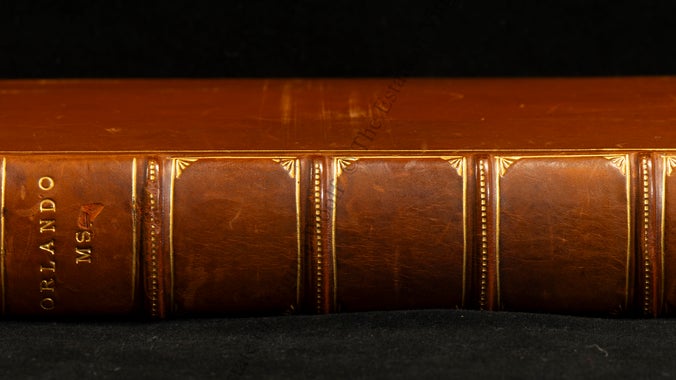

The manuscript was given to the National Trust by Vita’s son, Nigel Nicolson, who believed it was Orlando’s rightful home. The purple ink that Virginia used to handwrite her drafts is very sensitive to light therefore the manuscript is rarely on display to prevent the words fading. However, a recent project to digitise every page means that one of the most beautiful and complex literary works of the twentieth century can now be accessed from anywhere in the world.

Front cover

Page 1, dedicatory page

Page 2

Page 3

Page 4

Page 5

Page 6

Page 7

Page 8

Page 10

Page 11

Page 12

Back of page 12

Page 13

Page 14

Page 15

Page 16

Back of page 16

Page 17

Page 18

Page 19

Back of page 19

Page 20

Back of page 20

Page 21

Page 22

Page 23

Page 24

Page 25

Page 26

Page 27

Page 28

Page 29

Page 30

Back of page 30

Page 31

Page 32

Page 33

Page 34

Page 35

Page 36

Back of page 36

Page 37

Back of page 37

Page 38

Page 39

Page 40

Page 41

Page 42

Page 43

Page 44

Page 45

Page 46

Page 47

Page 48

Page 49

Page 50

Page 51

Page 52

Page 53

Page 54

Page 55

Page 56

Page 57

Page 58

Page 59

Page 60

Page 61

Page 62

Back of page 62

Page 63

Page 64

Back of page 64

Page 65

Page 66

Page 67

Page 68

Page 69

Page 70

Page 71

Page 72

Page 73

Page 74

Page 75

Page 76

Page 77

Page 78

Back of page 78

Page 79

Page 80

Page 81

Page 82

Page 83

Page 84

Page 85

Page 86

Page 87

Page 88

Page 89

Page 90

Page 91

Page 92

Page 93

Page 94

Page 95

Page 96

Page 97

Page 98

Page 99

Page 100

Page 101

Page 102

Page 103

Page 104

Page 105

Page 106

Page 107

Page 108

Page 109

Page 111

Page 112

Page 113

Page 114

Page 115

Page 116

Page 117

Page 118

Page 119

Page 120

Page 121

Page 122

Page 123

Page 124

Page 125

Page 126

Page 127

Page 128

Page 129

Page 130

Page 131

Page 132

Page 133

Page 134

Page 135

Page 136

Page 137

Page 138

Page 139

Back of page 139

Page 140

Page 141

Page 142

Page 143

Page 144

Page 145

Page 146

Page 147

Page 148

Page 149

Page 150

Page 151

Page 152

Page 153

Page 154

Page 155

Page 156

Back of page 156

Page 157

Back of page 157

Page 158

Back of page 158

Page 159

Back of page 159

Page 160

Page 161

Page 162

Back of page 162

Page 163

Page 164

Page 165

Page 166

Page 167

Page 168

Page 169

Page 170

Page 171

Page 172

Page 173

Page 174

Page 175

Page 176

Page 177

Page 178

Back of page 178

Page 179

Page 180

Back of page 180

Page 181

Back of page 181

Page 182

Page 183

Page 184

Page 185

Page 186

Page 187

Page 188

Page 189

Page 190

Page 191

Page 192

Page 193

Page 194

Page 195

Page 196

Page 197

Back of page 197

Page 198

Page 199

Page 200

Page 201

Page 202

Back of page 202

Page 203

Page 204

Page 205

Page 206

Page 207

Page 208

Page 209

Page 210

Page 211

Page 212

Page 213

Page 214

Page 215

Page 216

Page 217

Page 218

Back of page 218

Page 219

Page 220

Back of page 220

Page 221

Back of page 221

Page 222

Page 223

Page 224

Page 225

Page 226

Page 227

Page 228

Back of page 228

Page 229

Page 230

Page 231

Page 232

Page 233

Page 234

Page 235

Page 236

Page 237

Page 238

Page 239

Page 240

Page 241

Page 242

Page 243

Page 244

Page 245

Page 246

Page 247

Page 248

Page 249

Page 250

Page 251

Page 252

Page 253

Page 254

Page 255

Page 256

Page 257

Back of page 257

Page 258

Page 259

Page 260

Page 261

Page 262

Page 263

Back of page 263

Page 264

Page 265

Page 266

Page 267

Page 268

Page 269

Page 270

Page 271

Page 272

Page 273

Page 274

Page 275

Page 276

Page 277

Back of page 277

Page 278

Page 279

Page 280

Page 281

Back of page 281

Page 282

Page 283

Page 284

Page 285

Page 286

Page 287

We look after over 300 historic buildings and nearly one million works of art, which need constant care to maintain them. You can help protect these important buildings and collections by donating today.
Take in the scale and magnificence of this 600-year-old estate with its courtyards, showrooms, Gatehouse Tower and acres of parkland.
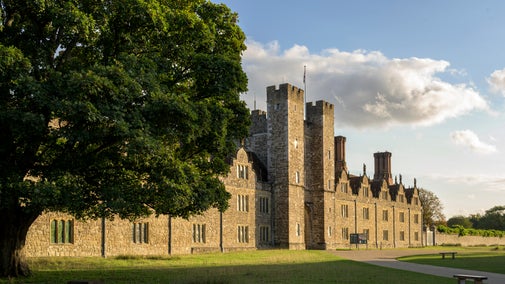
Historic, poetic, iconic: a refuge dedicated to beauty. Vita Sackville-West and Harold Nicolson fell in love with Sissinghurst Castle and created a world-renowned garden.
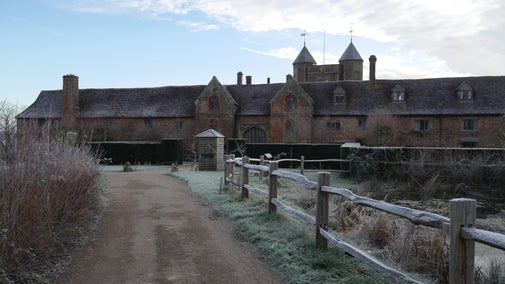
Discover the life of prolific writer and passionate gardener Vita Sackville-West and her husband Harold Nicolson at Sissinghurst Castle Garden.

The author Virginia Woolf was a leading figure of the Bloomsbury movement in the early 20th century. Read about how her life was shaped by her unconventional approach to gender and sexuality.

By sharing your email address you’re agreeing to receive marketing emails from the National Trust and confirm you’re 18 years old or over. Please see our for more information on how we look after your personal data.